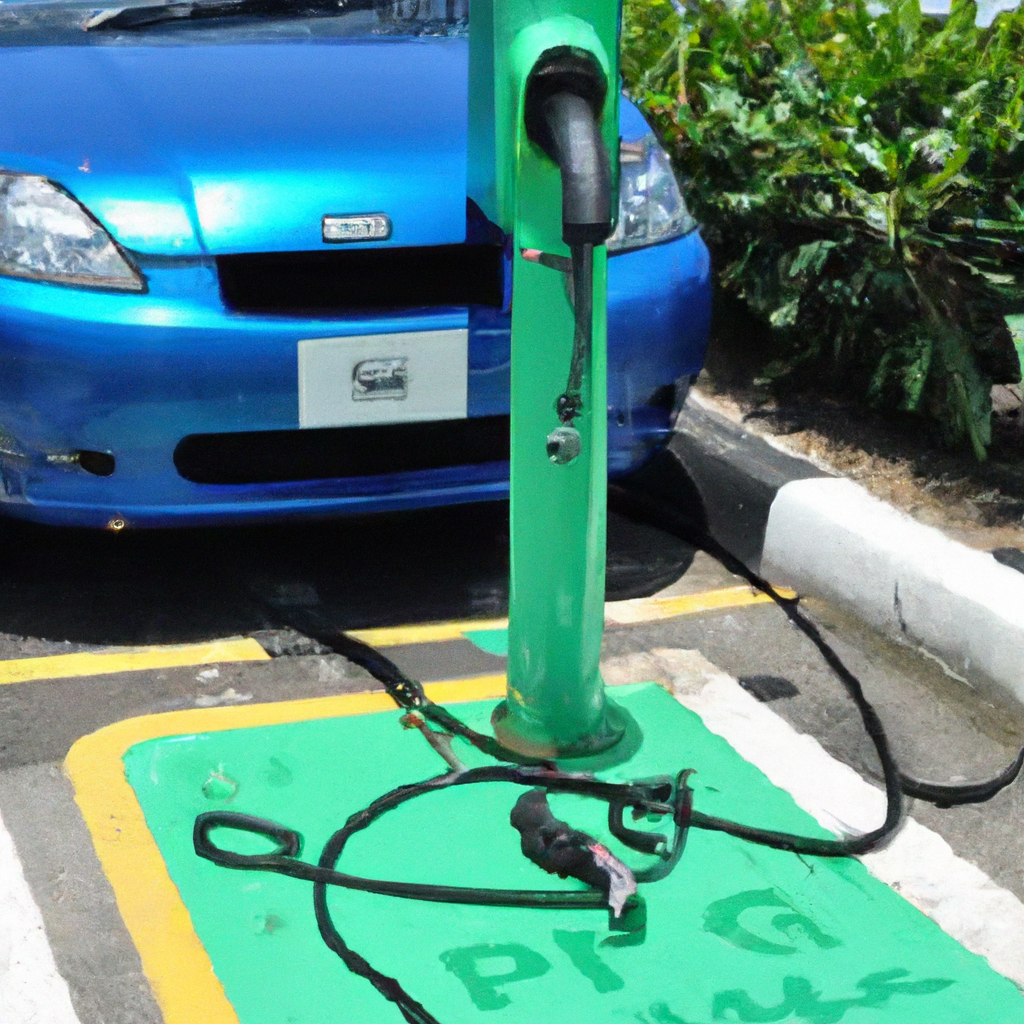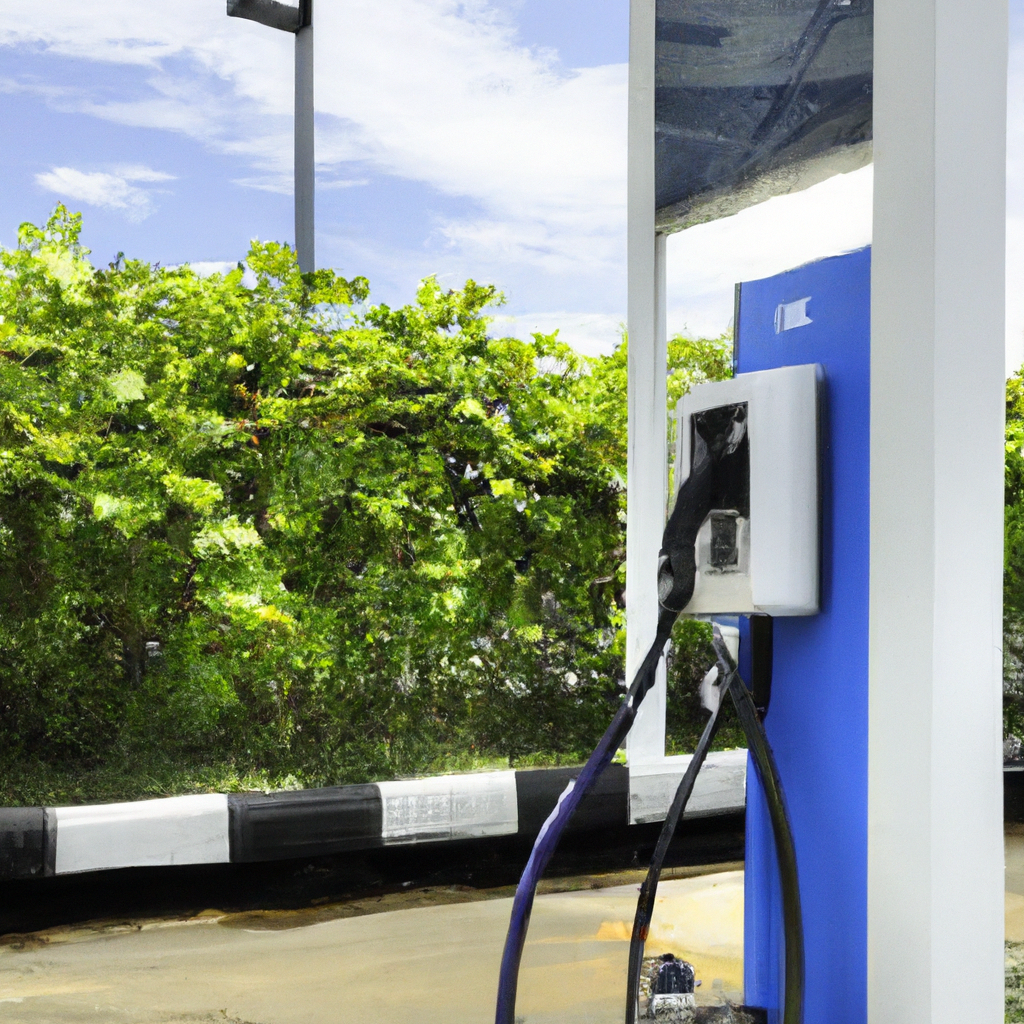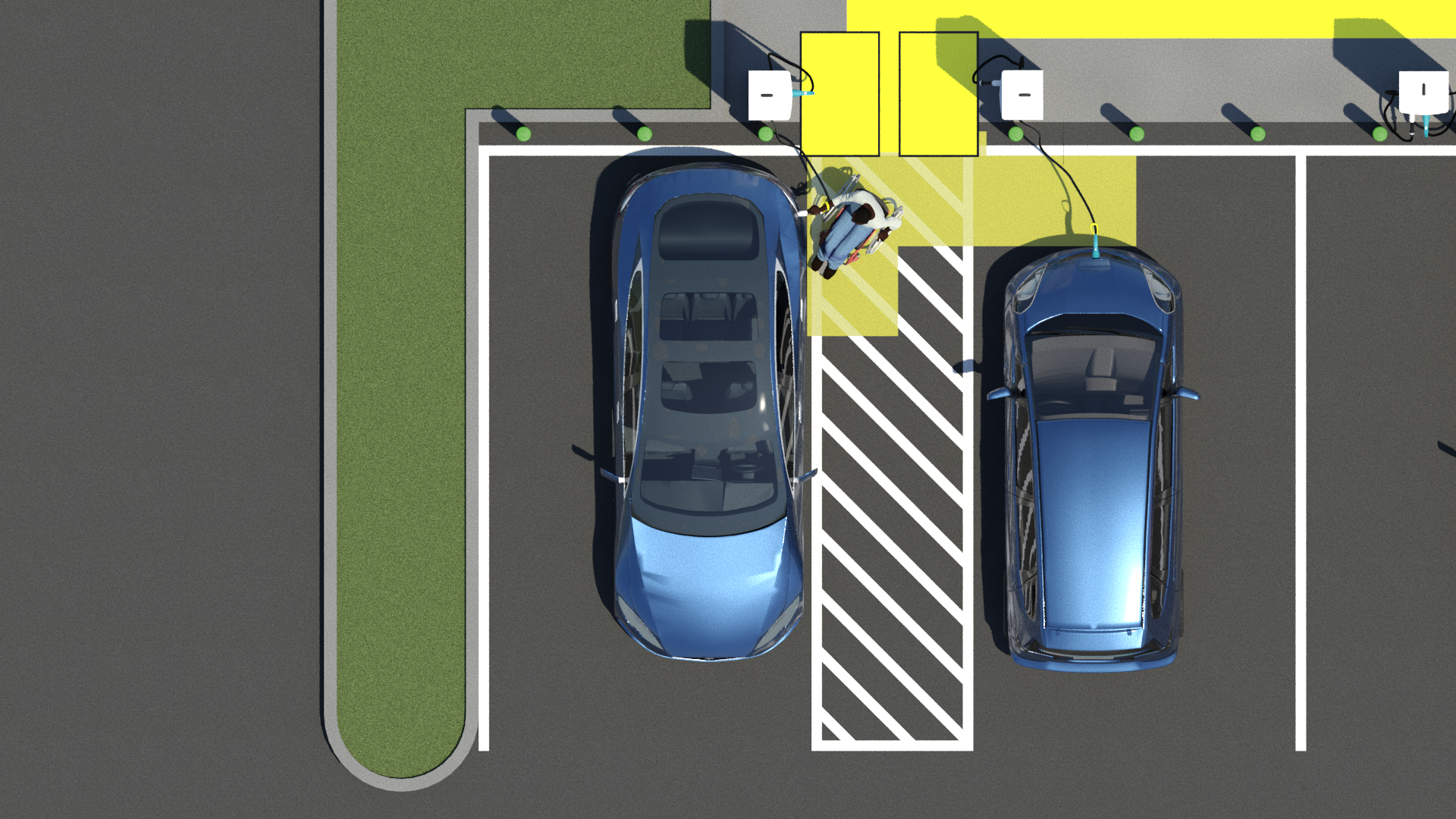What Are The Maintenance Requirements For Public EV Charging Stations In Malaysia?
October 12, 2023 | by Jacob Kang

Looking to learn about the maintenance requirements for public EV charging stations in Malaysia? Look no further! In this article, we will delve into the essential maintenance tasks needed to ensure the smooth operation of these charging stations. Whether you’re a business owner, a charging station operator, or simply interested in the sustainable future of transportation, this article will provide you with valuable insights on keeping public EV charging stations up and running efficiently. So, let’s dive in and explore the key maintenance requirements for these stations in Malaysia.
Regular Maintenance
Cleaning and Inspection
Regular cleaning and inspection are vital for maintaining the efficiency and performance of public EV charging stations in Malaysia. Dust, dirt, and debris can accumulate on the charging units, cables, and connectors, which can hinder the charging process and potentially damage the equipment. Therefore, it is important to clean the charging stations regularly to ensure uninterrupted functionality.
During the inspection, the technical staff should check for any signs of wear and tear, loose connections, or physical damage. They should also inspect the cables and connectors for any signs of fraying or corrosion, as these can impact the charging efficiency and pose safety risks. By regularly cleaning and inspecting the charging stations, potential issues can be identified and addressed promptly, preventing major disruptions and prolonging the lifespan of the equipment.
Electrical Testing and Component Replacement
To ensure optimal functioning of public EV charging stations, regular electrical testing is necessary. This involves testing the voltage, current, and power output of the charging units to confirm that they are within the specified range. Any deviations could indicate a fault or malfunction that needs attention.
In addition to electrical testing, it is crucial to replace faulty or damaged components promptly. This includes cables, connectors, and other electrical parts. By replacing such components in a timely manner, the risk of accidents, such as electric shocks or short circuits, can be minimized. Regular electrical testing and component replacement help maintain the safety and reliability of public EV charging stations.
Software Updates
Software updates play a crucial role in maintaining the efficiency and security of public EV charging stations in Malaysia. The software controls various aspects of the charging process, including authentication, billing, and monitoring. Regular updates ensure that the charging stations are equipped with the latest features, bug fixes, and security patches.
Software updates also enable the implementation of new functionalities and improvements, enhancing the overall user experience. It is important to regularly check for and install updates to ensure the charging stations operate smoothly and securely. By keeping up with software updates, the charging stations can adapt to evolving technology standards and provide a seamless charging experience for EV users.
Emergency Service and Repair

24/7 Support
In the event of an emergency or technical issue, it is crucial to provide 24/7 support for public EV charging stations in Malaysia. EV users rely on these charging stations to power their vehicles, and any disruption in services can be highly inconvenient and frustrating. Therefore, having a dedicated support team available round the clock ensures that any problems can be addressed promptly and effectively.
The 24/7 support team should be well-trained in troubleshooting common issues, such as authentication failures, charging interruptions, or connectivity problems. They should be equipped with the necessary knowledge and tools to provide remote assistance or dispatch an on-site technician if required. By offering reliable and timely support, public EV charging stations can enhance user satisfaction and build trust among the EV community.
Rapid Response for Faults
Public EV charging stations are susceptible to various faults and technical issues. These can range from simple connectivity problems to more complex hardware failures. To minimize downtime and ensure uninterrupted service, a rapid response system should be in place.
A rapid response system involves the swift identification of faults and the deployment of technicians to resolve the issues. The technical staff should be equipped with the necessary tools and spare parts to carry out on-site repairs efficiently. Additionally, they should have access to troubleshooting guides and diagnostic equipment to streamline the fault identification and resolution process.
By prioritizing rapid response for faults, public EV charging stations can minimize the impact of disruptions on the EV users and maintain a reliable and efficient charging infrastructure.
Replacement of Faulty Components
In the event of component failures or damages that cannot be repaired on-site, it is essential to have a reliable system in place for the replacement of faulty components. This could involve keeping a stock of spare parts nearby or having a partnership with suppliers who can deliver the required components quickly.
Timely replacement of faulty components ensures that the charging stations can resume normal operations as soon as possible. It also prevents further damage to the equipment and reduces the risk of accidents or safety hazards. By having a robust system for the replacement of faulty components, public EV charging stations can minimize downtime and provide a seamless charging experience for the users.
Preventive Maintenance

Scheduled Inspections
Scheduled inspections are an integral part of preventive maintenance for public EV charging stations in Malaysia. These inspections should be conducted at regular intervals to identify any potential issues or risks before they escalate into major problems.
During the inspections, the technical staff should thoroughly examine the charging units, cables, connectors, and other components for signs of wear and tear, corrosion, or any other forms of damage. They should also ensure that the charging stations comply with safety standards and regulations. Any identified issues should be promptly addressed, either through repairs or component replacements.
By conducting scheduled inspections, public EV charging stations can proactively address maintenance needs, extend the lifespan of the equipment, and maintain a high level of service reliability.
Battery Performance Monitoring
The battery is a critical component of EV charging stations as it stores and supplies power to the vehicles. Therefore, monitoring the performance of the batteries is crucial to ensure optimal charging efficiency and prolong their lifespan.
Battery performance monitoring involves regularly measuring and analyzing various parameters such as voltage, temperature, state of charge, and charging time. Any deviations from the expected values could indicate a battery issue that needs attention. By closely monitoring the battery performance, potential faults or degradation can be detected early, allowing for timely intervention and replacement if necessary.
Optimizing battery performance not only ensures efficient charging but also contributes to the overall reliability and durability of the public EV charging stations.
Cable and Connector Check
Cables and connectors are essential components of EV charging stations and are subjected to significant wear and tear due to frequent use and exposure to the elements. Therefore, regular checks and maintenance of cables and connectors are essential to ensure their reliability and safety.
During the cable and connector checks, the technical staff should inspect them for any signs of physical damage, such as fraying, cracks, or corrosion. They should also ensure that the connections are secure and free from any loose or exposed wires. Any identified issues should be promptly addressed through repairs or replacements.
Regular cable and connector checks are crucial for maintaining the integrity of the charging infrastructure and preventing accidents or interruptions in the charging process.
Network Monitoring and Management

Real-time Monitoring
Real-time monitoring is a critical aspect of maintaining a reliable and efficient network of public EV charging stations in Malaysia. It involves continuously monitoring the performance of the charging units, network connectivity, and user interactions.
Real-time monitoring allows for the early detection of any issues or anomalies, such as charging failures, communication errors, or power fluctuations. By promptly identifying and addressing such issues, the technical staff can minimize downtime and ensure a seamless charging experience for the users.
Additionally, real-time monitoring enables the optimization of charging operations, such as load balancing or dynamic pricing, based on the demand and grid conditions. It provides valuable insights into the usage patterns, user behavior, and overall network performance, facilitating data-driven decision-making for network management and improvements.
Remote Troubleshooting
Remote troubleshooting is a cost-effective and efficient method for resolving technical issues in public EV charging stations. Through remote access to the charging units or the network management system, the technical staff can diagnose and resolve common problems without the need for a physical presence at the site.
Remote troubleshooting allows for quick identification and resolution of issues, reducing the response time and minimizing the impact on the users. It also eliminates the need for on-site visits, saving time and resources. The technical staff can remotely perform tasks such as system reboot, firmware updates, or configuration changes, ensuring continuous operation and optimal performance of the charging stations.
By utilizing remote troubleshooting capabilities, public EV charging stations can streamline their maintenance processes, improve service responsiveness, and minimize disruptions.
Data Analytics for Optimized Charging
Data analytics plays a pivotal role in optimizing the charging operations and user experience of public EV charging stations. By leveraging the vast amount of data generated by the charging infrastructure, valuable insights can be gained to enhance the efficiency and reliability of the network.
Data analytics can provide valuable information about usage patterns, charging demand, peak hours, and user preferences. This data can be used to optimize the allocation of charging resources, predict and manage peak demand, and plan for capacity expansion or infrastructure upgrades.
Furthermore, data analytics can help identify potential bottlenecks, inefficiencies, or faulty components within the charging network. By detecting and addressing these issues proactively, the overall performance and user satisfaction can be significantly improved.
By harnessing the power of data analytics, public EV charging stations can make informed decisions, improve charging operations, and deliver an enhanced user experience.
Physical Infrastructure Maintenance

Checking and Repairing Charging Units
The physical infrastructure of public EV charging stations in Malaysia needs regular checking and maintenance to ensure its optimal functionality. This includes inspecting and repairing the charging units themselves.
During the checking process, the technical staff should look for any physical damages, loose connections, or signs of wear and tear on the charging units. They should also ensure that the units are securely mounted and properly aligned for easy access by the users. Any identified issues should be promptly addressed through repairs or replacements.
Regular checking and repairing of charging units contribute to the overall reliability and user experience of public EV charging stations. It ensures that the charging units are in good condition and readily available for the EV users when they need them.
Replacing Damaged Cables and Connectors
Cables and connectors are subjected to constant wear and tear due to frequent use and exposure to various environmental factors. Therefore, it is essential to replace damaged cables and connectors promptly to maintain a safe and reliable charging infrastructure.
The technical staff should regularly inspect the cables and connectors for signs of physical damage, such as fraying, cracks, or corrosion. Damaged cables or connectors can pose safety hazards and affect the charging efficiency. Hence, they should be replaced with new ones to ensure uninterrupted charging and prevent any accidents.
By promptly replacing damaged cables and connectors, public EV charging stations can ensure the safety of the users and maintain a high level of service reliability.
Maintaining Signage and Markings
Proper signage and markings are crucial for guiding the users to the public EV charging stations and facilitating a smooth charging experience. Therefore, it is essential to regularly maintain and update the signage and markings at the charging sites.
The technical staff should ensure that the signage is clearly visible and provides accurate information about the charging stations, such as charging rates, payment methods, and support contact details. They should also ensure that the parking spaces designated for EV charging are clearly marked and readily identifiable.
Regular maintenance of signage and markings helps prevent confusion among the users, promotes efficient use of the charging infrastructure, and enhances the overall user experience.
Power Supply and Grid Connection Maintenance

Monitoring Grid Load
Public EV charging stations rely on the power supply from the grid to operate and provide charging services. Therefore, monitoring the grid load is crucial to ensure a stable and reliable power supply for the charging infrastructure.
Grid load monitoring involves continuously tracking the demand and supply of electricity in the grid, especially during peak charging hours. By closely monitoring the grid load, the charging stations can adjust their charging operations to avoid overloading the grid. This can be achieved through load balancing techniques or dynamic pricing strategies.
Monitoring the grid load not only ensures the stability of the power supply but also contributes to the overall grid management and energy optimization efforts.
Checking Voltage and Current Levels
Public EV charging stations require a specific voltage and current level to provide efficient and safe charging. Therefore, it is essential to regularly check the voltage and current levels of the incoming power supply to ensure compatibility with the charging infrastructure.
Voltage and current level checks involve verifying that the incoming power supply meets the specifications of the charging units. Any deviations from the recommended levels could indicate issues with the grid connection or the charging equipment. Prompt action should be taken to address such deviations, either by contacting the utility provider or conducting necessary repairs.
By regularly checking the voltage and current levels, public EV charging stations can ensure the compatibility and reliability of their power supply, providing a seamless charging experience for the users.
Ensuring Backup Power Availability
Backup power availability is crucial for public EV charging stations to ensure uninterrupted charging services, especially during power outages or emergencies. Therefore, it is important to have reliable backup power systems in place.
The backup power systems can range from uninterruptible power supply (UPS) units to backup generators or energy storage solutions. These systems should be regularly tested and maintained to ensure their proper functionality when needed. The technical staff should also ensure that there is a sufficient fuel or energy reserve to power the charging stations for an extended period if required.
By ensuring backup power availability, public EV charging stations can provide a reliable and continuous charging service, even in challenging conditions, enhancing user confidence and satisfaction.
Security and Safety Measures
Regular CCTV Inspection
Public EV charging stations should be equipped with CCTV cameras to enhance security and deter potential misuse or vandalism. Regular inspection and maintenance of these cameras are vital to ensure their proper functionality.
The technical staff should regularly check the CCTV cameras for dirt, lens obstructions, or signs of physical damage. They should ensure that the cameras are positioned correctly for optimal coverage and adjust them if necessary. Additionally, they should regularly review the footage to identify any suspicious activities or incidents that may require further action.
Regular CCTV inspection and maintenance contribute to the overall security and safety of public EV charging stations, providing a deterrent against criminal activities and ensuring a secure environment for the users.
Emergency Lighting Maintenance
Emergency lighting plays a crucial role in ensuring the safety of the users and guiding them during power outages or emergencies. Therefore, it is important to regularly maintain and test the emergency lighting systems in public EV charging stations.
The technical staff should inspect the emergency lighting fixtures for any signs of damage, such as broken bulbs or loose connections. They should also regularly test the functioning of the emergency lights to ensure their reliability during critical situations. Any identified issues should be promptly addressed through repairs or replacements.
Maintaining proper emergency lighting helps create a safe environment for the users and contributes to the overall safety measures of public EV charging stations.
Fire Safety Equipment Check
Fire safety equipment is essential for public EV charging stations to prevent and mitigate the risk of fire incidents. Regular checks and maintenance of these equipment are necessary to ensure their proper functioning.
The technical staff should inspect the fire safety equipment, such as fire extinguishers, fire alarms, and sprinkler systems, for any signs of damage or malfunction. They should also ensure that the equipment is readily accessible and properly labeled. Regular testing of the equipment’s functionality, such as checking the pressure of fire extinguishers, should be conducted, and any deficiencies should be addressed promptly.
By maintaining proper fire safety equipment, public EV charging stations can minimize the risks associated with fire incidents, ensuring the safety of the users and protecting the charging infrastructure.
User Experience Enhancement
Ensuring Display and Interface Functionality
The display screens and user interfaces of public EV charging stations play a crucial role in providing a seamless and user-friendly experience. Therefore, it is essential to ensure their proper functionality through regular checks and maintenance.
The technical staff should regularly inspect the display screens for any signs of damage, such as cracks or pixel abnormalities. They should also ensure that the user interfaces are responsive and easy to navigate. Any identified issues or malfunctions should be promptly addressed by repairing or replacing the respective components.
By ensuring the proper functionality of the display screens and user interfaces, public EV charging stations can provide clear instructions, real-time information, and intuitive interactions, enhancing the overall user experience.
Optimizing Payment Systems
Efficient and convenient payment systems are essential for ensuring a seamless transaction experience at public EV charging stations. Regular optimization of these payment systems helps streamline the payment process and enhance user satisfaction.
The technical staff should regularly test and update the payment systems to ensure their compatibility with different payment methods, such as credit cards, mobile applications, or RFID cards. They should also address any reported issues or glitches promptly and provide assistance to users who may encounter payment difficulties.
Optimizing payment systems not only simplifies the charging process but also fosters user trust and encourages wider adoption of electric vehicles.
Maintaining User Feedback Channels
User feedback is valuable for identifying areas of improvement and addressing any concerns or issues at public EV charging stations. Therefore, it is important to establish and maintain effective channels for users to provide feedback and receive responses.
The technical staff should actively monitor and respond to user feedback, whether through online platforms, dedicated helplines, or email communication. They should address the reported issues promptly, provide necessary explanations or solutions, and ensure follow-up actions are taken if required.
Maintaining user feedback channels fosters a sense of engagement and inclusivity among the users, allowing them to contribute to the continuous improvement of public EV charging stations.
Environmental Considerations
Renewable Energy Integration
Public EV charging stations in Malaysia can contribute to the country’s sustainability goals by integrating renewable energy sources into their operations. Harnessing solar or wind power for charging can reduce reliance on fossil fuels and minimize the carbon footprint of the charging infrastructure.
The technical staff should explore and implement renewable energy solutions, such as installing solar panels or wind turbines, to generate clean energy for the charging stations. They should also ensure that the charging infrastructure is compatible with the renewable energy sources and that the power generated is efficiently utilized.
By integrating renewable energy, public EV charging stations can promote sustainability, reduce greenhouse gas emissions, and support Malaysia’s transition towards a low-carbon future.
Waste Management and Disposal
Proper waste management and disposal practices are essential for maintaining a clean and environmentally friendly charging infrastructure. Public EV charging stations generate various types of waste, such as packaging material, broken components, or hazardous materials.
The technical staff should implement recycling programs for recyclable waste, such as paper or plastic packaging. Hazardous materials, such as batteries or electronic components, should be handled and disposed of according to the relevant regulations and guidelines to prevent environmental contamination.
By adopting responsible waste management practices, public EV charging stations can reduce their environmental impact and contribute to a circular economy.
Sustainability Initiatives
Public EV charging stations can actively engage in sustainability initiatives to promote environmental awareness and community involvement. These initiatives can range from educational campaigns on sustainable transportation to tree planting activities or eco-friendly events.
The technical staff should collaborate with local communities, educational institutions, or environmental organizations to organize and participate in sustainability initiatives. These initiatives can raise awareness about the benefits of electric vehicles, promote energy conservation, and foster a culture of environmental responsibility.
By actively engaging in sustainability initiatives, public EV charging stations can contribute to a greener future, inspire positive change, and build stronger connections with the communities they serve.
Training and Knowledge Transfer
Technical Training for Maintenance Staff
Regular technical training is essential for the maintenance staff of public EV charging stations to keep up with the evolving technology and best practices. Through training programs, the staff can acquire the necessary skills and knowledge to efficiently maintain and troubleshoot the charging infrastructure.
Technical training should cover a wide range of topics, including electrical systems, software updates, communication protocols, and safety procedures. The staff should also stay informed about the latest industry standards, regulations, and emerging technologies related to EV charging.
By investing in technical training, public EV charging stations can ensure that their maintenance staff is equipped with the expertise required to provide reliable and effective support to the users.
Educational Programs for Users
Educating the users about the features, benefits, and proper usage of public EV charging stations is crucial for fostering a positive charging experience and promoting wider adoption of electric vehicles.
Public EV charging stations should organize educational programs or workshops that provide information about the charging process, safety precautions, charging etiquette, and the environmental benefits of electric transportation. These educational programs can be conducted in collaboration with EV manufacturers, local EV associations, or government agencies.
By empowering the users with knowledge, public EV charging stations can improve their overall charging experience, build trust, and contribute to the growth of the EV ecosystem in Malaysia.
Sharing Best Practices
Sharing best practices and lessons learned among public EV charging stations is essential for driving continuous improvement and innovation in the industry. The technical staff should actively participate in knowledge-sharing platforms, industry conferences, or forums to exchange experiences and insights.
By sharing best practices, public EV charging stations can learn from each other, adopt proven strategies, and implement efficient maintenance approaches. This collaboration promotes standardization, efficiency, and the overall advancement of the charging infrastructure in Malaysia.
By following these maintenance requirements, public EV charging stations in Malaysia can ensure operational efficiency, user satisfaction, and contribute to the sustainable development of the electric vehicle ecosystem. Regular maintenance, technical training, and prompt response to issues are vital for providing reliable and convenient charging services to the growing number of electric vehicle users in the country.
RELATED POSTS
View all


